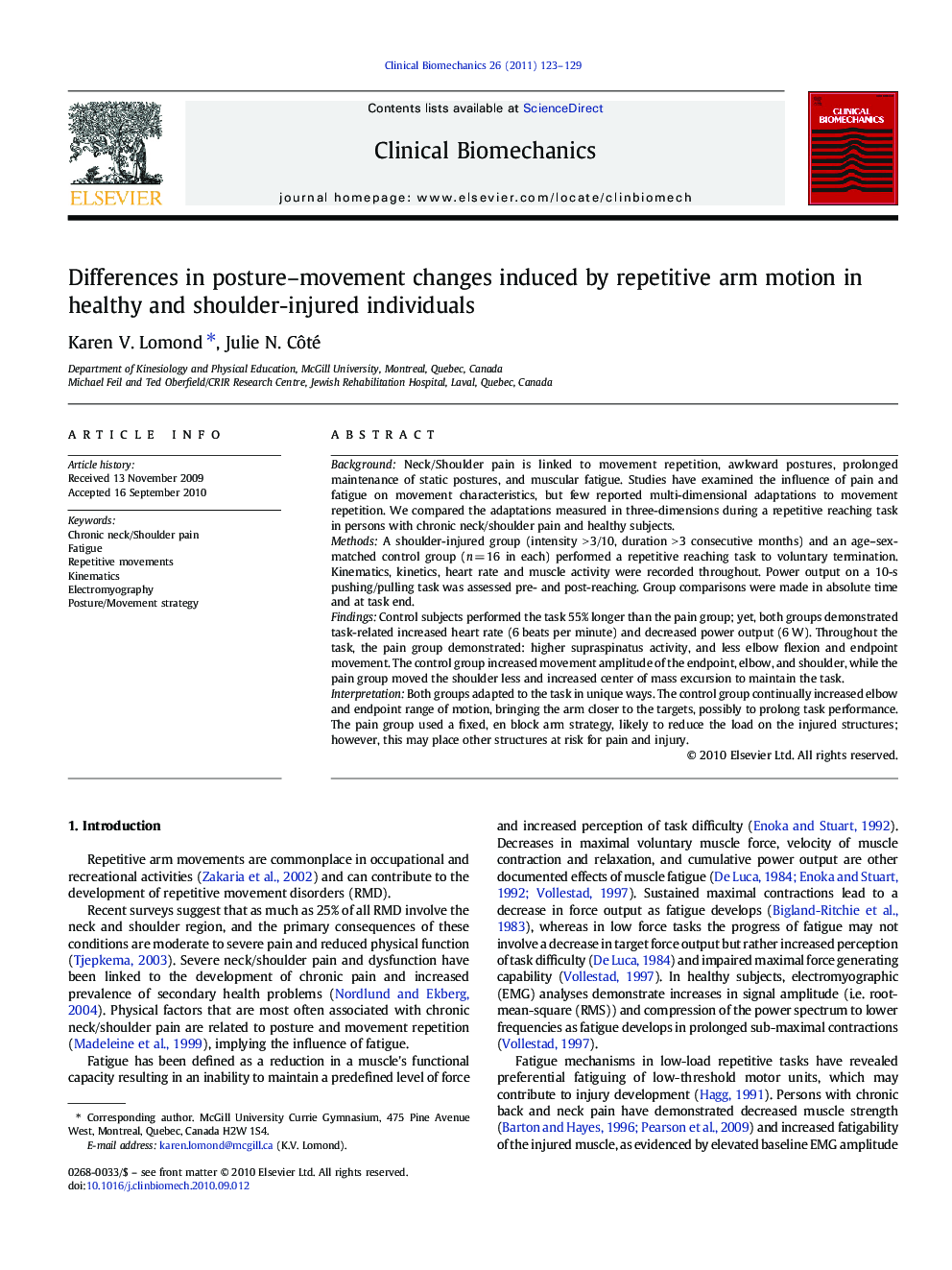| کد مقاله | کد نشریه | سال انتشار | مقاله انگلیسی | نسخه تمام متن |
|---|---|---|---|---|
| 4050860 | 1264962 | 2011 | 7 صفحه PDF | دانلود رایگان |

BackgroundNeck/Shoulder pain is linked to movement repetition, awkward postures, prolonged maintenance of static postures, and muscular fatigue. Studies have examined the influence of pain and fatigue on movement characteristics, but few reported multi-dimensional adaptations to movement repetition. We compared the adaptations measured in three-dimensions during a repetitive reaching task in persons with chronic neck/shoulder pain and healthy subjects.MethodsA shoulder-injured group (intensity > 3/10, duration > 3 consecutive months) and an age–sex-matched control group (n = 16 in each) performed a repetitive reaching task to voluntary termination. Kinematics, kinetics, heart rate and muscle activity were recorded throughout. Power output on a 10-s pushing/pulling task was assessed pre- and post-reaching. Group comparisons were made in absolute time and at task end.FindingsControl subjects performed the task 55% longer than the pain group; yet, both groups demonstrated task-related increased heart rate (6 beats per minute) and decreased power output (6 W). Throughout the task, the pain group demonstrated: higher supraspinatus activity, and less elbow flexion and endpoint movement. The control group increased movement amplitude of the endpoint, elbow, and shoulder, while the pain group moved the shoulder less and increased center of mass excursion to maintain the task.InterpretationBoth groups adapted to the task in unique ways. The control group continually increased elbow and endpoint range of motion, bringing the arm closer to the targets, possibly to prolong task performance. The pain group used a fixed, en block arm strategy, likely to reduce the load on the injured structures; however, this may place other structures at risk for pain and injury.
Journal: Clinical Biomechanics - Volume 26, Issue 2, February 2011, Pages 123–129